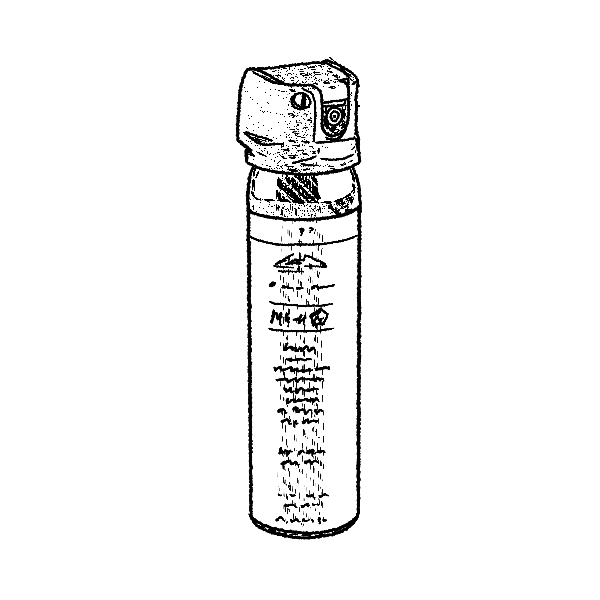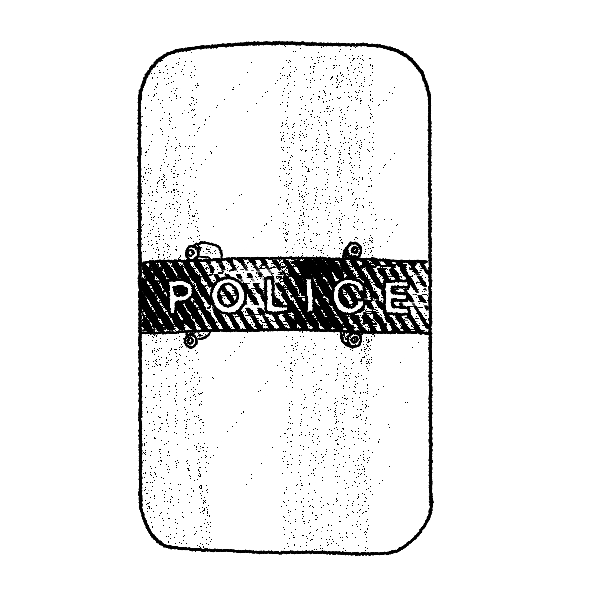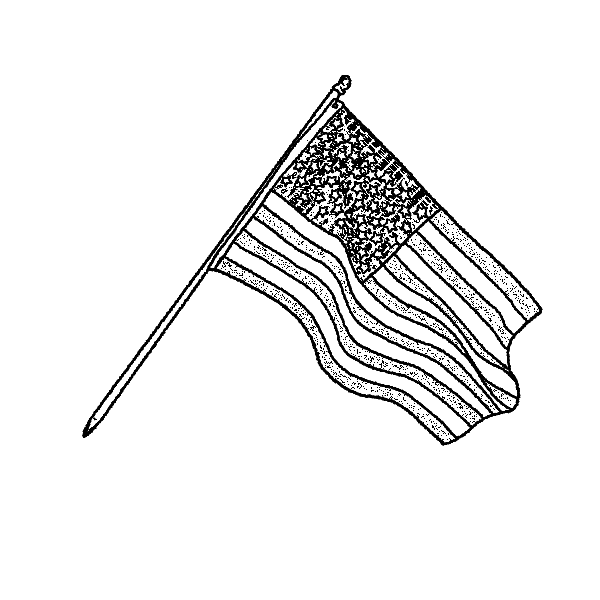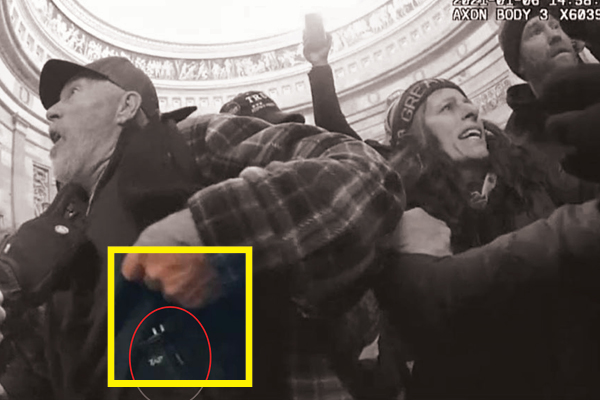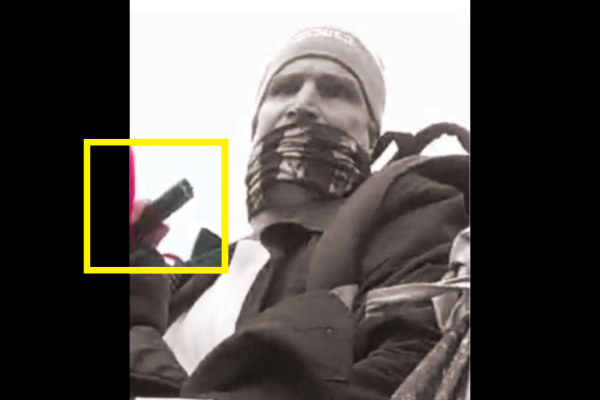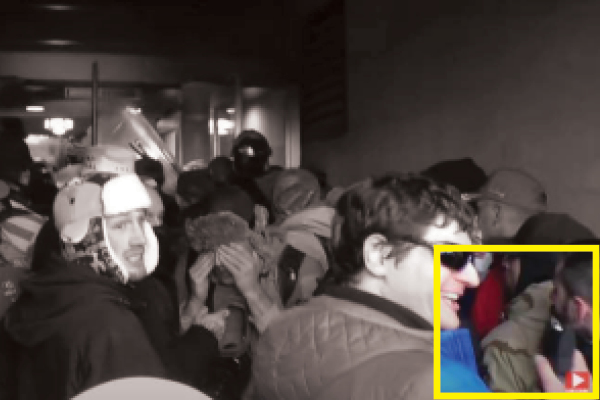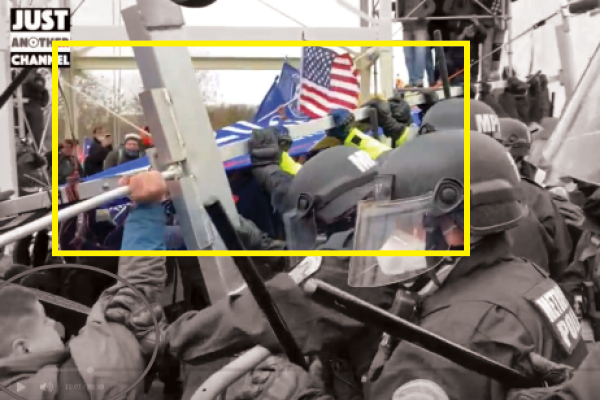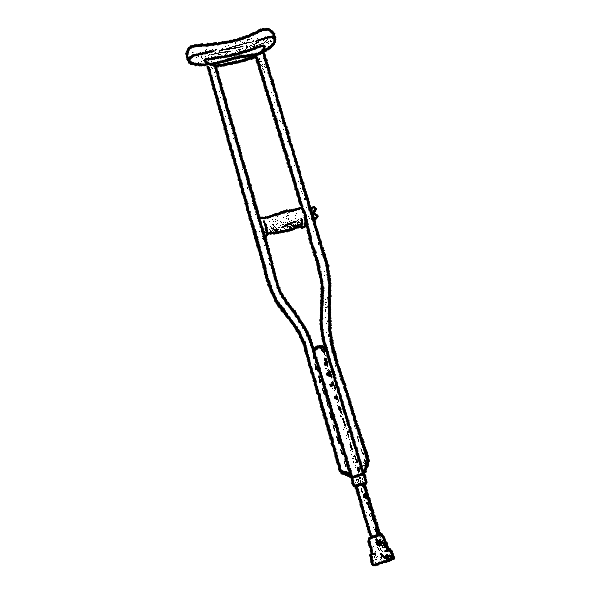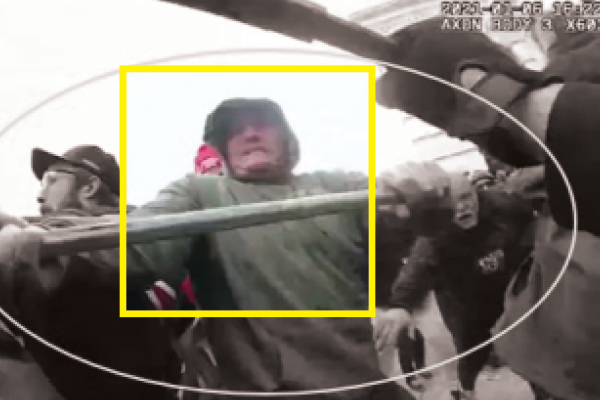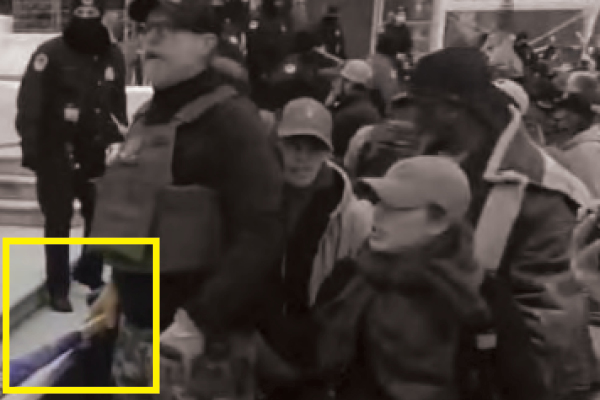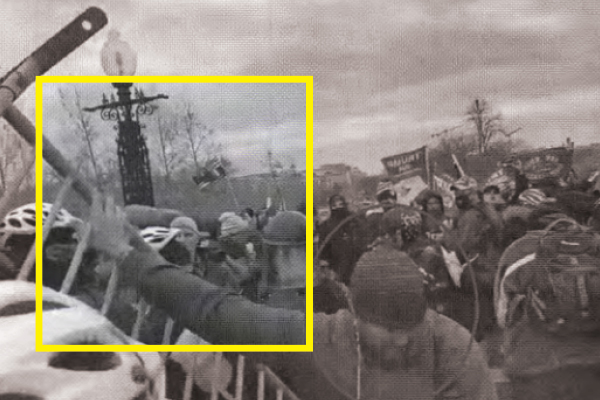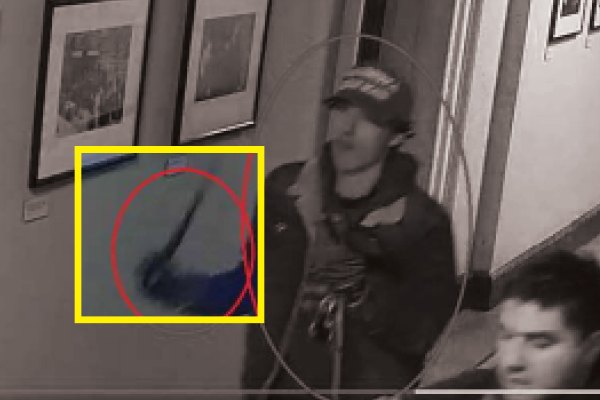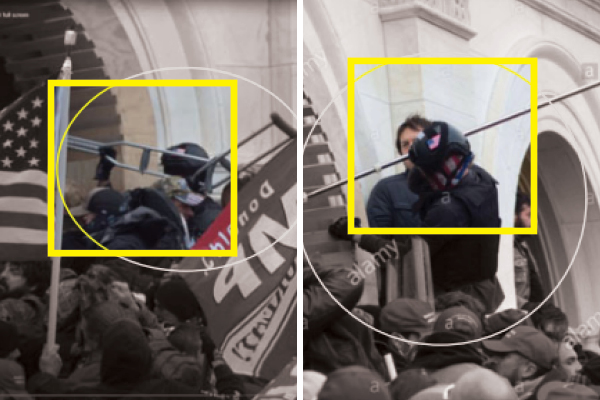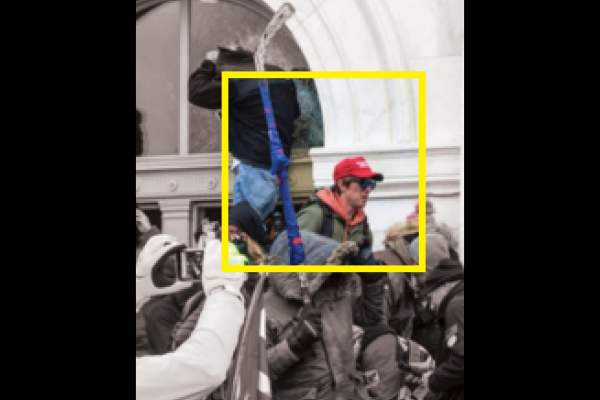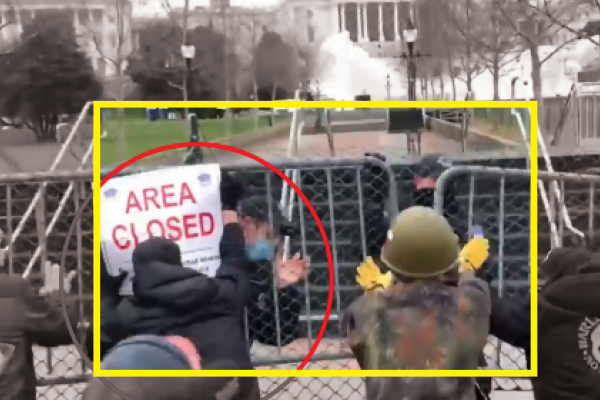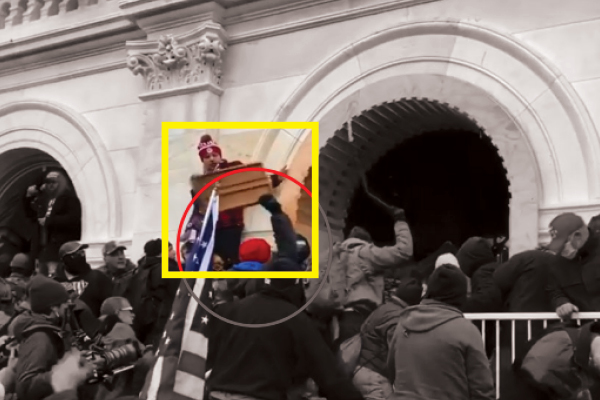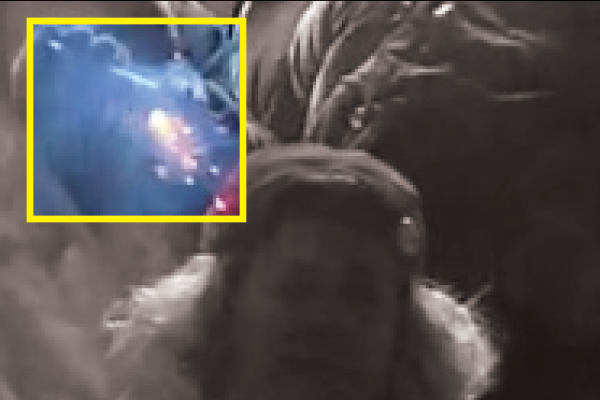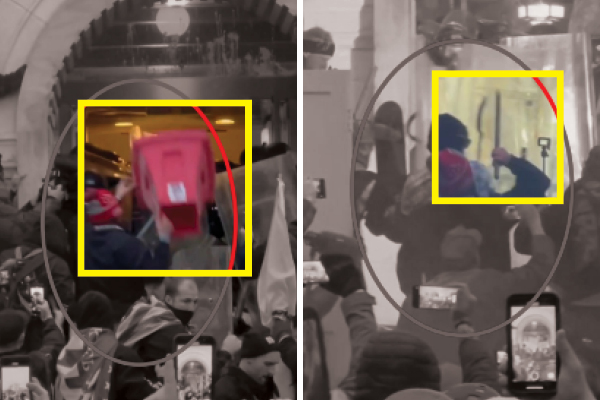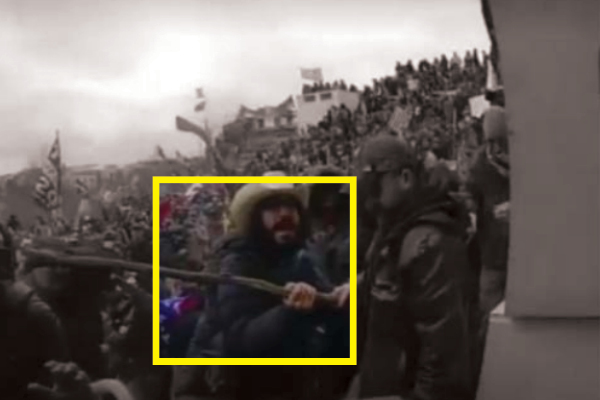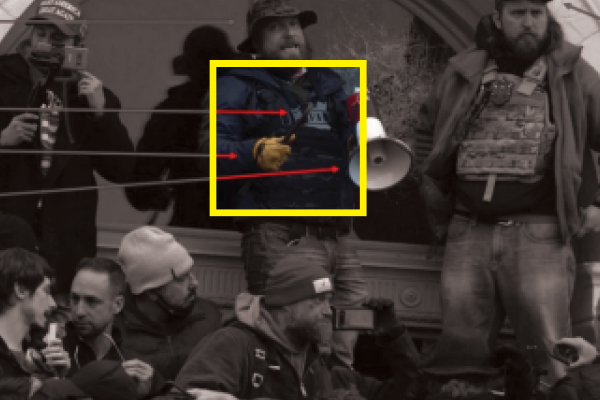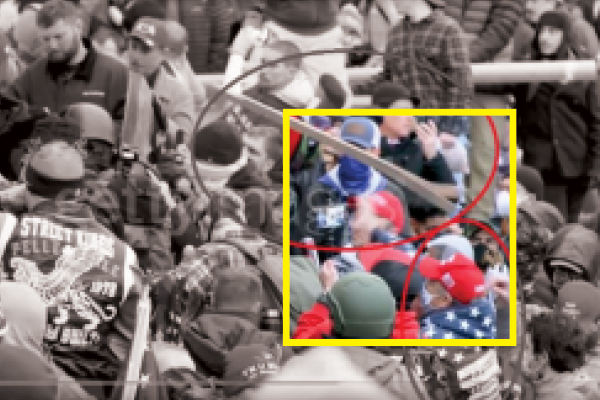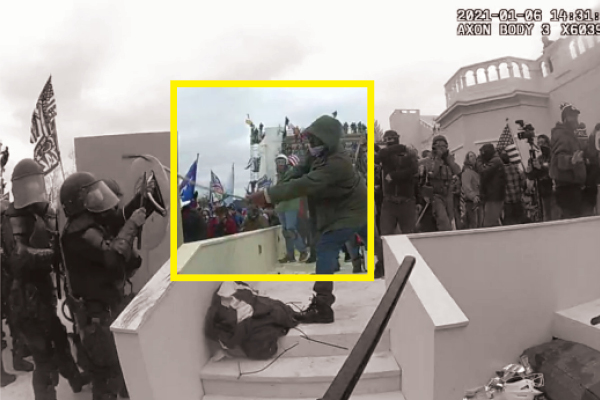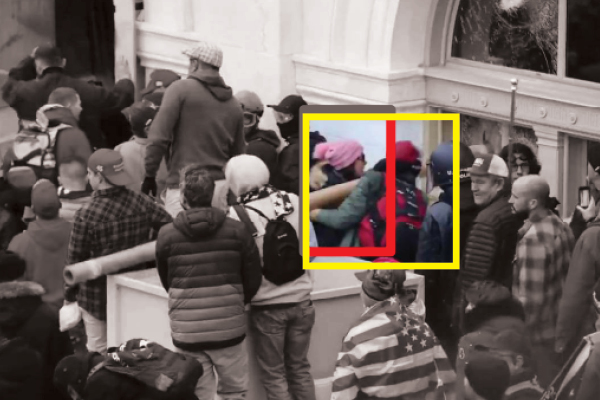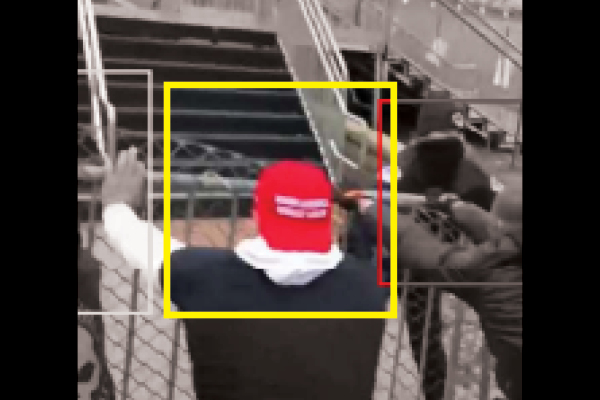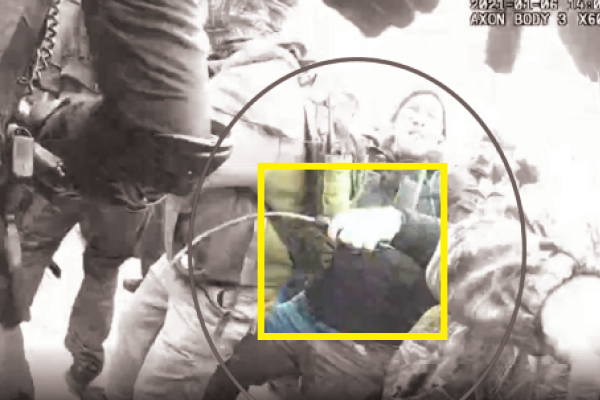Guns, knives, bats, chemicals, stolen police gear, flagpoles, a “Trump 2020” sign, pieces of metal and wood, crutches, a skateboard, stun devices, a crow bar, and a firecracker.
BuzzFeed News; Department of Justice; Reuters
WASHINGTON — On Jan. 16, FBI agents executed a search warrant at the Wylie, Texas, home of alleged Capitol rioter Guy Reffitt. In his bedroom, agents found a holster with a Smith & Wesson semiautomatic handgun that they suspected he’d brought to Washington.
Reffitt wasn’t immediately charged with weapons offenses, but prosecutors argued to keep him in jail on the grounds that he’d traveled with the pistol and an AR-15 rifle “to participate in an armed insurrection.” In June, a federal grand jury returned an indictment that charged him not only with bringing firearms for a “civil disorder” on Jan. 6, but also specifically with carrying the pistol on Capitol grounds. Late last month, prosecutors disclosed a photo of the gun for the first time, along with images from the Capitol that they said would support their case at trial.
At least 85 people are charged with carrying or using a weapon during the Capitol riots, according to BuzzFeed News’ analysis of court records. The US attorney’s office in Washington has said that approximately 140 police officers were assaulted on Jan. 6, and the majority of defendants charged with weapon-related offenses are also accused of using those objects to attack police. Some are charged with using weapons to break windows, and others are charged simply with having weapons at the Capitol, a crime in itself.
A weapons charge significantly ups the stakes in these cases. A class-A misdemeanor for illegally going into the Capitol carries a maximum sentence of one year in prison. If a defendant also had a “deadly or dangerous” weapon — one of the crimes that Reffitt was indicted for — the maximum sentence jumps to 10 years behind bars. A defendant can face up to 8 years in prison for assaulting an officer, or 20 years if they did it with a weapon. Whether a defendant is accused of carrying a weapon has been a major factor in fights over who should stay in jail pending trial.
Reffitt is one of three people charged with carrying a gun onto Capitol grounds; no one is charged so far with having a gun inside the building. Two others are charged with bringing guns and explosives to Washington. Thousands of supporters of former president Donald Trump descended on the complex that day, and conservative politicians and commentators — including Trump — have either pushed a false narrative that there was no evidence that anyone had a gun, or pointed to the relatively small number of cases involving firearms as evidence that the riot wasn’t all that violent or dangerous to the police officers protecting the building and to the elected officials, congressional employees, and journalists inside.
But to focus only on guns is also to ignore the many other objects that rioters brought with them, stole from police, or improvised on the scene that could be used to hurt someone or break something. The federal offenses being charged in these cases don’t feature an exhaustive list of what qualifies as a “deadly or dangerous” weapon. Prosecutors have cited cases that define the term as an object that’s “inherently dangerous” — like a gun — or that’s “used in a way that is likely to endanger life or inflict great bodily harm.” That second, broader category has left room for a few defendants to dispute that the item they were charged with having in their hand on Jan. 6 was, at least in the eyes of the law, a weapon.
Below are the main categories of weapons that prosecutors have identified in the more than 650 cases filed so far, with most defendants charged not yet convicted.
In Reffitt’s case, prosecutors last month shared a photo of the holster and the gun that the FBI reported finding in his bedroom. They also highlighted two images pulled from video footage on Jan. 6 that showed a person, identified as Reffitt, from behind with a black, rectangular object attached to his pants sticking out from under a blue coat — an object that the government says it intends to prove was the same holster and pistol if his case goes to trial. Reffitt told the FBI when agents searched his home in January that he’d disassembled the pistol to comply with local gun laws.
Reffitt wasn’t the first person charged with bringing a gun onto Capitol grounds. As DC police cleared the area the night of Jan. 6, an officer noticed a man with a “bulge” on his right hip. Officers recovered a loaded 9mm pistol and a magazine from Christopher Alberts of Maryland, and he was arrested on the spot, according to his charging papers. He and his lawyer are considering a plea deal offer from the government, according to a Nov. 2 status report.
In July, the Justice Department charged Mark Ibrahim of California with bringing a gun onto Capitol grounds. He was on leave at the time from his job as a special agent with the Drug Enforcement Administration and didn’t have permission to be at the Capitol; he’d previously put in a resignation notice. He posed for photos flashing his government-issued firearm, according to his charging papers. During a voluntary interview with the Justice Department’s inspector general’s office in March, he acknowledged having his gun and his DEA badge but denied displaying them.
Two other defendants have been charged with illegally bringing guns and explosive devices to Washington on Jan. 6, but those weapons were found in their vehicles and the government hasn’t put forward evidence that they brought them to the Capitol.
At least a dozen defendants are charged with carrying a knife or an axe. No one is charged with using those weapons against police, although some are separately charged with assaulting or interfering with officers. Douglas Jensen, the man identified by prosecutors in a viral video leading a mob that chased US Capitol Police Officer Eugene Goodman up a set of stairs, allegedly had a knife with a 3-inch blade in his pocket at the time.
Other defendants in this category include Alex Harkrider of Texas, who prosecutors identified in photos inside and outside the Capitol with an axe strapped to his vest; Robert Morss of Pennsylvania, who the government said had a knife tucked into his tactical vest and joined a mob that tried to push past a police line protecting one of the entrances; Joshua Black of Alabama, who allegedly had a knife, in his words, “bolted on my hip” as he made his way onto the Senate floor; and Shane Jenkins of Texas, who is charged with using a small hatchet to try to break a window into the Capitol.
At least 17 defendants are charged with carrying or deploying pepper spray, bear spray, or some other chemical. Footage from police body cameras and surveillance cameras show frequent exchanges of chemical spray between officers and rioters, and how officers retreated to wash out their eyes and recover from exposure; in a lawsuit filed by US Capitol Police officers seeking to hold Trump and his allies liable for the violence they experienced, one plaintiff described a “chemical fog” inside the building.
Defendants in these cases include Julian Khater and George Tanios, who are charged with conspiring to bring chemical spray to the Capitol and using it against Capitol Police Officer Brian Sicknick, who later died. The pair isn’t charged in connection with Sicknick’s death. The chief medical examiner in Washington determined in a report released in April that Sicknick died of natural causes, but also told the Washington Post that “all that transpired played a role in his condition”; the medical examiner’s office declined to provide more details at the time.
Some charging papers include photos and still images from videos that depict rioters in the act of spraying police. Defendants in those cases include Andrew Taake of Texas, who was identified by prosecutors in photos spraying officers in the face; New York pair Cody Mattice and James Mault, who the government identified separately aiming a spray canister into a tunnel where police had formed a defensive line; and Edward Rodriguez, identified deploying a canister at a line of officers trying to contain the mob outside.
At least 13 people are charged with carrying or using police batons or large riot shields that they took from officers or found on the ground. Those defendants include Scott Fairlamb of New Jersey, who pleaded guilty to punching a police officer in the head; he also admitted to picking up a police baton on the ground that he brought inside the Capitol and displaying it in a video posted to Facebook in which he said, “What patriots do? We fucking disarm them and then we storm the fucking Capitol.” He’d been charged with weapons offenses, but those were dropped as part of his deal.
Countless people brought flags with them to the Capitol, but a small number of defendants — at least nine — are charged with carrying or using them as weapons. They include Chad Jones of Kentucky, who prosecutors identified in a video using what one witness said Jones told them was a rolled-up “Trump flag” to break the glass on a door leading to the lobby of Speaker Nancy Pelosi’s office; Jeffrey McKellop of Virginia, charged with using a flagpole to hit an officer in the face and then throwing it like a spear; and Thomas Webster of New York, a retired police officer and US Marine Corps veteran who was identified by the government in photos using a flagpole with a Marine Corps flag attached to strike at officers.
At least six defendants are charged with carrying or using a Taser or other electroshock device. They include Daniel Rodriguez of California, first identified by HuffPost as the person seen in a video using a stun gun to attack Metropolitan Police Officer Michael Fanone, who had a heart attack and was hospitalized; Alan Byerly of Pennsylvania, charged with activating a Taser and wielding it as he charged police; and Vitali Gossjankowski of Florida, also accused of activating a Taser while he was part of a crowd trying to push through a police line.
Richard Barnett of Arkansas, who was photographed with a stun gun walking stick on his hip as he sat with a foot up in Pelosi’s office, isn’t accused of deploying the device but is facing weapons counts for having it in the Capitol. Barnett has claimed the device didn’t have batteries in it and wasn’t usable at the time. The prosecutor called this explanation “pure fiction,” saying the government had evidence he’d “proudly discharged” it the night before.
At least four people are charged with using a fire extinguisher to assault police — either by deploying the spray or using the canister itself as a weapon. Those defendants include Robert Palmer of Florida, who pleaded guilty to spraying a fire extinguisher at police until it was empty and then throwing the canister at officers.
At least four people are charged with carrying or using a baseball bat on the Capitol grounds, including during violent clashes with police and, in the case of defendant Jorden Mink of Pennsylvania, to allegedly smash a window into the Capitol.
At least three defendants are charged with being part of a group that used a large, metal-framed “TRUMP 2020” sign as, in the government’s words, a “battering ram” against a line of officers on the Capitol grounds. One of those defendants, Sean McHugh of California, also allegedly used a megaphone to direct rioters trying to use the sign to push past police.
Prosecutors have accused people of wielding a variety of other objects on Jan. 6. Charging papers feature allegations of violence involving pieces of metal — rods, poles, fences, and a whip — and wood — clubs, a cane, a plank, a tabletop, and a desk drawer. At least three people are charged with using a crutch to attack police. The panoply of weapons identified by prosecutors on the Capitol grounds that day also includes a skateboard, a helmet, a crowbar, a hockey stick, and a firecracker.
David Judd of Texas, charged with throwing a lit firecracker at officers, is one of the defendants contesting the weapons charges against him. His lawyer filed a motion last month arguing that the device wasn’t a dangerous weapon because there wasn’t evidence any officer was injured or that it “activated.” His lawyer wrote that “small firecrackers or sparklers such as the one allegedly used by Mr. Judd are intended to be used near people — such that the audible bang can be experienced by bystanders — to attract attention during celebrations or as a form of entertainment itself.”
Prosecutors argued that the issue ultimately was one for a jury to decide, but also stood by the charging decision. The government’s response cited data from the US Consumer Product Safety Commission about the estimated 2,500 injuries from firecrackers and sparklers that were treated in emergency rooms last year alone — “a variety of serious injuries attributable to firecrackers including: eye injuries, vision impairment, broken fingers, first and second degree burns, and amputation.” ●
Illustrations by Claire McCracken; Images via Department of Justice



